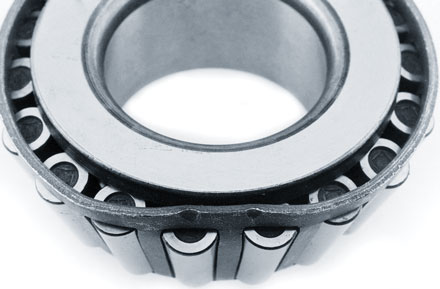Rolling bearings are precision machine components that may be used in various applications. They are usually quite dependable, even in the most adverse situations. Bearings have a significant "service life" under typical working circumstances, as either a time or the total number of rotations before the rolling components or inner and outer rings tire or fail.
When a bearing breaks, it is due to preventable factors. Most bearing failures are usually attributed to a small group of causes that are often interrelated and correctable. As a result, drawing judgments about the cause of a problem by observing its appearance is useful. It is vital to address the underlying reasons to avoid future failures and related costs.
Bearing failure analysis gathers and evaluates bearing data to discover the reason for a bearing failure. It is a must in developing new or improved bearing products and applications. It is critical to diagnose a bearing failure to avoid recurring failure and further costs.
 Source: Machinery Lubrication
Source: Machinery Lubrication
Data Collection and Analysis
The first step is collecting failure data. Get all the failed components related to the bearing failure and other related materials, test/failure data, specifications for materials used in the application, and even the customer's design FEMA. Then, confirm actual operating conditions data and parameters found on a Materials Application Data Sheet. The next step is analyzing the date. This could be done through various types of analysis, such as Vibration Analysis and Ultrasound Analysis.
Vibration Analysis
There are several methods for using Vibration Analysis to investigate bearing failure. There are vibration tests, which are an effective method for measuring quality. Another is vibration monitoring, which relies on the well-known characteristic vibration signatures which rolling bearings exhibit as the rolling surfaces degrade. But, bearing vibration cannot be easily measured in most situations. This often leads to a problematic interpretation of vibration data other than by a trained specialist and can, in some situations, lead to a misdiagnosis, resulting in unnecessary machine downtime and costs.
Ultrasound Analysis
Another analysis to consider is the Ultrasound Analysis. Ultrasound diagnostics for mechanical checks include bearing problems, pump cavitation, and valve condition. Users often verify a bearing condition by listening through a headset or trending decibel levels. By using sound recording and analysis, inspectors can also learn how a good bearing/bad bearing sounds, what happens when a bearing is being lubricated, and more.
These two procedures may provide a satisfying solution to the bearing failure. They may also suggest establishing a plan for advanced dimensional measurements or material analysis utilizing various non-destructive and destructive methods. When detecting machine issues, one should not always solely rely on one technology only. Using various technologies is more advantageous in capturing a full spectrum of issues that could be happening in your machine.
Reporting and Recommendations
Finally, the last step is issuing the report. The report might be short or very detailed, depending on the scope of the analysis.
A fundamental failure analysis report may be enough with only the background information, visual examination, and conclusions. This may be all required if this was a routine failure analysis for a given customer's application. Technical analysis might be included if further detail is necessary to please the customer.
Suppose the fundamental analysis is insufficient to meet the need for failure analysis. In that case, you will need to prepare a strategy that first will use non-destructive test/measurement techniques and, if required, destructive testing to complete the failure analysis. Depending upon the need for advanced study, the report may include the reports of those extra analyses to support the report's conclusions and recommendations further.
Bearing failure may be avoided by selecting bearing technologies best suited to the application specifications, recommendations, maintenance methods, fatigue life, and wear resistance. Premature bearing failure within a valid application is often linked to one or more of the stated reasons, which may and should be addressed to avoid future bearing failures and associated expenses.
If you have any issues with this, CRE Philippines, a reliability-centered laboratory, offers diverse programs and solutions such as its BearingCheck™ which is specifically designed to detect issues with your machine's bearing. The tests for wear metal elements, oil condition, and contamination. To help you gain a more in-depth understanding of detecting bearing failures using airborne ultrasound or vibration analysis, reach out to us for your training needs. Catch the upcoming Airborne Ultrasound Inspection I training program from January 23 to 27, 2023, and the upcoming Vibration Analysis I training program from February 8 to 11, 2023.
Sources:
Diagnosing Bearing Failures Using Ultrasound Spectrum Analysis. Bearing-NEWS. (2022, April 26). Retrieved from https://www.bearing-news.com/diagnosing-bearing-failures-using-ultrasound-spectrum-analysis/
How to Do Bearing Failure Analysis. GGB. (n.d.). Retrieved from https://www.ggbearings.com/en/tribou/how-do-bearing-failure-analysis
Lacey, S. J. (n.d.). Using Vibration Analysis To Detect Early Failure Of Bearings. AggNet. Retrieved from https://www.agg-net.com/resources/articles/maintenance-repair/using-vibration-analysis-to-detect-early-failure-of-bearings
SANTORA, M. I. K. E. (2017, January 31). Bearing failure and analysis. BEARING TIPS. Retrieved from https://www.bearingtips.com/best-practices-bearing-failure-analysis/


